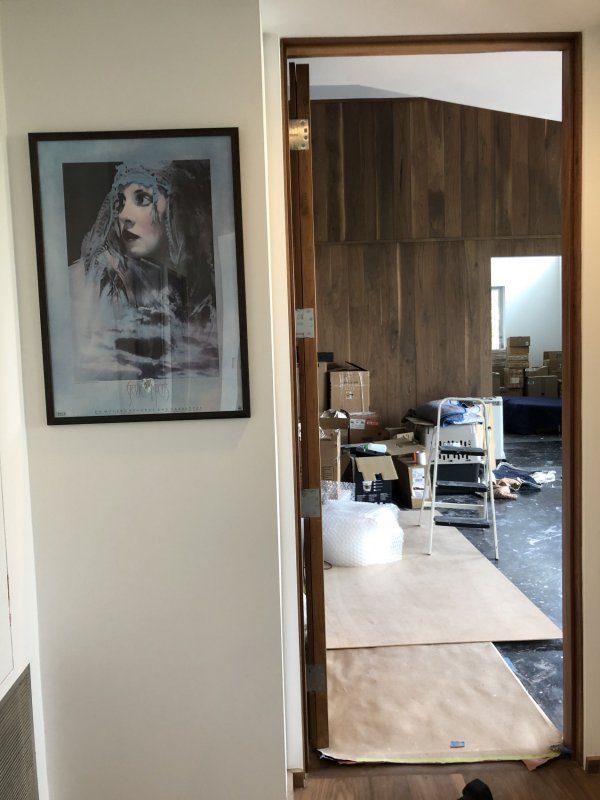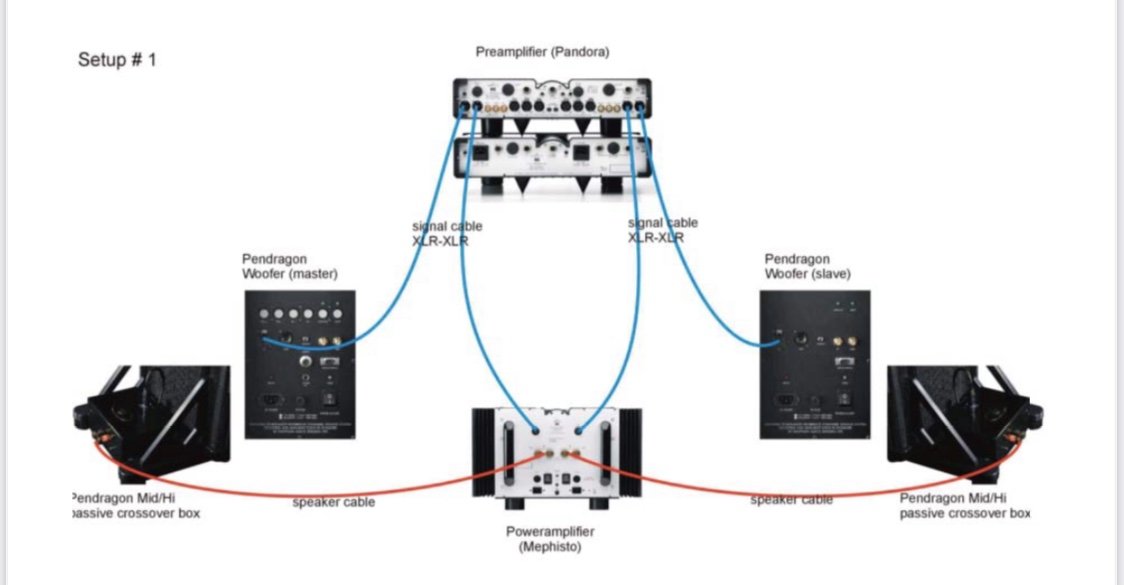You REALLY wanna freak the guy out?He has heard them only once. So he can definitely go back to Denmark to listen, and on the way can meet Lagonda...Lmao
Ron's Speaker, Turntable, Power and Room Treatment Upgrades
- Thread starter Ron Resnick
- Start date
You are using an out of date browser. It may not display this or other websites correctly.
You should upgrade or use an alternative browser.
You should upgrade or use an alternative browser.
The sound quality of a great or even a good low powered SET is on a very different level than even the “best” high powered amplifiers, this is the primary reason for owning true easy to drive high sensitivity speakers IMO. Of course there are other benefits inherent to such designs. Whatever abilities speakers like your Pendragons might have is ultimately negated by the need for high powered amplification. The other issue that we’ve discussed and I’ve harped about often is the built-in amplification of a half active speaker. In this scenario you are stuck with whatever they put in there and will never properly integrate with its other half without matching amplification or use of typical homogenizing so called audiophile cabling, this is a fact. Set up of 4 boxes has additional complication that one should keep in mind contrary to claims of setup flexibility. Given all this I’m wondering how vocals are the competency of such designs when you’ll always end up with two different voices singing the same note trying to sound as one.Saturday morning musing:
I ordered the Gryphon Pendragon loudspeakers almost four years ago. Since then I have developed a greater appreciation for, and listened to more, jazz music and classical music. Jazz music and classical music definitely were not focuses of mine when we listened to the Pendragons in Denmark.
In the last four years I have developed a greater appreciation for the importance of the tone and body of acoustic instruments in audio reproduction. My friends with vintage or horn or concentric driver-type systems which reproduce particularly realistically the tone of acoustic instruments has allowed me to better understand and to better appreciate the importance of this sonic attribute to the suspension of disbelief. in the last four years I have had the opportunity to learn about, and to hear, many horn loudspeakers which I was unfamiliar with four years ago.
I have developed a greater appreciation of the benefit of driver-to-driver coherency in a loudspeaker. I like the coherence and holistic organicness I hear from Tannoy and Fyne concentric drivers, and from the wide-band driver of the PBN M2!M Jeff Tyo Special Edition. The biggest weakness of a two-way, four column system like the Pendragon with radically different driver topologies is the coherence of the drivers -- and the columns -- into a unified, organic, sonic whole.
In addition, during the last four years, I have crystallized upon the personal view that low sensitivity loudspeaker designs sacrifice more in dynamics and jump factor than I recognized previously. This is why I feel like I am "over and done with" many low-sensitivity/multi-way driver/complex cross-over/traditional box speakers. The Magnepan MG-IIIA was my first loudspeaker. I would not buy a 86dB sensitivity loudspeaker today. The Pendragon is a relatively low-sensitivity planar design.
Finally, I believe that the manufacturers of dynamic driver loudspeakers have not stood still in the last four years. The Wilson Audio XVX is the first dynamic driver loudspeaker I have heard that puts me on the same indifference curve with the planars I have always preferred. As someone who has owned only planar loudspeakers since 1988 this is, for me, a pretty dramatic development.
No loudspeaker is perfect. Every design is a compromise on one or more sonic parameters. I believe that some loudspeakers make easier the suspension of disbelief with certain types of music than with other types of music.
It will be very interesting to see how I feel about the Pendragon in light of these personal developments and evolving preferences and competing speaker manufacturer innovations. I remain absolutely confident of the Pendragon’s ability on vocals. But will it be able to perform as creditably on other genres of music? Time will tell . . .
david
I take it that there being another speaker - that there now is an indifference curve - is what is dramatic - that or the need to make a choice? Is it frustrating or challenging? I say defer to your changing values - the 'maturation' of your listening preferences. Don't let opportunity cost nag at you.
I have not placed any choice in front of me. I have no decision to make. My post was an effort at introspection; not a justification for action or an intent to suggest that I had any desire to replace the Pendragon. I remain extremely excited about the Pendragon.
Answer: Challenging, not frustrating.
The Pendragon remains my absolutely favorite design of any loudspeaker today. With regard to my favorite musical genre preference of vocals the Pendragon is the speaker I would select today.
The evolution of my loudspeaker views and listening preferences simply means that I likely will be more aware of the Pendragon's ribbon/woofer column discontinuity than I was previously.
Last edited:
I can't think of many people who would have a 2die4 set of spkrs in crates, unaffordable to most, maximum effort expended to acquire...and be thinking of replacing them, or that they're not what's really wanted, before uncrating and having an extended listen.
I would say Lol...but this is no laughing matter...lol.
Don't worry, Marc, I am not thinking of replacing them.
The sound quality of a great or even a good low powered SET is on a very different level than even the “best” high powered amplifiers, this is the primary reason for owning true easy to drive high sensitivity speakers IMO. Of course there are other benefits inherent to such designs. Whatever abilities speakers like your Pendragons might have is ultimately negated by the need for high powered amplification. The other issue that we’ve discussed and I’ve harped about often is the built-in amplification of a half active speaker. In this scenario you are stuck with whatever they put in there and will never properly integrate with its other half without matching amplification or use of typical homogenizing so called audiophile cabling, this is a fact. Set up of 4 boxes has additional complication that one should keep in mind contrary to claims of setup flexibility. Given all this I’m wondering how vocals are the competency of such designs when you’ll always end up with two different voices singing the same note trying to sound as one.
david
I think these are all very fair and legitimate questions and concerns. I agree these are potential problems.
The specific answer to your question is that I did not hear a second voice coming out of the woofer column. If a second voice was coming out of the woofer column I simply am not sensitive to this particular discontinuity.
The broader answer, I think, simply is that audiophiles are more sensitive to and less sensitive to different compromises.
For whatever subjective reason I feel that planar loudspeakers in general reproduce solo vocals more convincingly than other speaker types. This is my subjective starting point, and my extremely firm, experience-based personal preference.
Putting it differently, and stipulating that SET amplifiers are sonically superior to high power amplifiers, I experience with vocals a greater suspension of disbelief from planar speakers driven by sonically inferior high power amplifiers than I do from any other speaker topology driven by SET amplifiers.
This planar speaker starting point presents one with the questions of electrostatic (MartinLogan, Soundlab) versus ribbon (reconditioned Apogee, Alsyvox) versus magnetic quasi-ribbon (Magnepan, Analysis Audio); full range planar versus hybrid planar; and full range planar without external subwoofers versus full range planar with external subwoofers.
I view these options as relatively fine distinctions, with the decisions driven by subtle and subjective and personal preferences. My personal decision tree goes something like this:
1) I prefer the slightly greater corporeal body of a ribbon driver over an electrostatic driver.
2) I have a preference for avoiding the least sensitive (least efficient) planar options to minimize the sacrifice of dynamics and "jump factor."
3) A full range planar without dynamic driver cone support and "oomph" of some kind does not give me the realism and power and density I want in the lower midrange/upper bass frequency range. Thus a full range electrostatic does not work for me.
4) I think subwoofer integration is more likely to be successful when it is designed into the original system than when it is grafted on afterwards with external subwoofers. (For example, four column system (Evolution Acoustics MM7, Gryphon Kodo) versus REL "six-pack.")
5) If I actually experience a sonic discontinuity between the Gryphon amplifier in the bass tower and my choice of amplifier for the ribbon panel the answer simply is to replace the latter with a Gryphon amplifier. This is an easy swap. (The one component shoot-out I look forward to conducting someday is to compare to my first amplifier choice of high power, push-pull tubes a Gryphon amplifier on the one end of the amplifier spectrum and a high power SET amplifier on the other end of the amplifier spectrum.)
Last edited:
Ron, did you prefer your favorite vocal tracks on the Pendragons to ddk’s SET/horns? I really liked vocals on the Alysivox predecessor with low powered tubes but not as much as on David’s system.
No, I did not. I played only Bill Henderson's "Send in the Clowns." I felt that on that track David's system transformed the room into the most realistic reproduction of a live jazz club I had ever experienced from an audio system.
No, I did not. I played only Bill Henderson's "Send in the Clowns." I felt that on that track David's system transformed the room into the most realistic reproduction of a live jazz club I had ever experienced from an audio system.
Thanks Ron. I’m not surprised. I am looking forward to hearing your new system once your house is completed.
Stevie is now monitoring the entrance to the listening room.
Cool! I have that same Wild Heart promo poster that I bought from way back.
I had a bit of fun unboxing a load of boxes, and boxes inside of boxes, this weekend.
I have bought many tubes over the last several years. I am sure that when I ordered each set of tubes I had a particular application in mind for a particular component for a particular reason. I cannot remember any of that now, of course.
I suspect the tubes are for the Io, the VTL line stage, and maybe a future Nick Doshi tape stage.
I have bought many tubes over the last several years. I am sure that when I ordered each set of tubes I had a particular application in mind for a particular component for a particular reason. I cannot remember any of that now, of course.
I suspect the tubes are for the Io, the VTL line stage, and maybe a future Nick Doshi tape stage.
Attachments
-
 E2D5FCD2-2D55-40D4-A093-6618C2BD0901.jpeg555.9 KB · Views: 7
E2D5FCD2-2D55-40D4-A093-6618C2BD0901.jpeg555.9 KB · Views: 7 -
 CB3E70A7-3F20-4859-8F0B-7FFCBAB37B20.jpeg556.9 KB · Views: 6
CB3E70A7-3F20-4859-8F0B-7FFCBAB37B20.jpeg556.9 KB · Views: 6 -
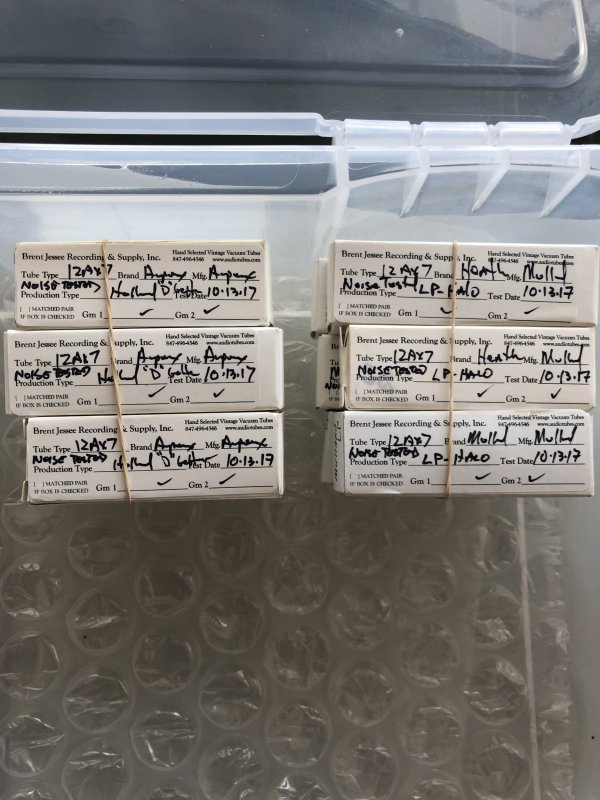 29495B16-FF3C-4B71-8201-FE9B2C69BEFB.jpeg575.5 KB · Views: 5
29495B16-FF3C-4B71-8201-FE9B2C69BEFB.jpeg575.5 KB · Views: 5 -
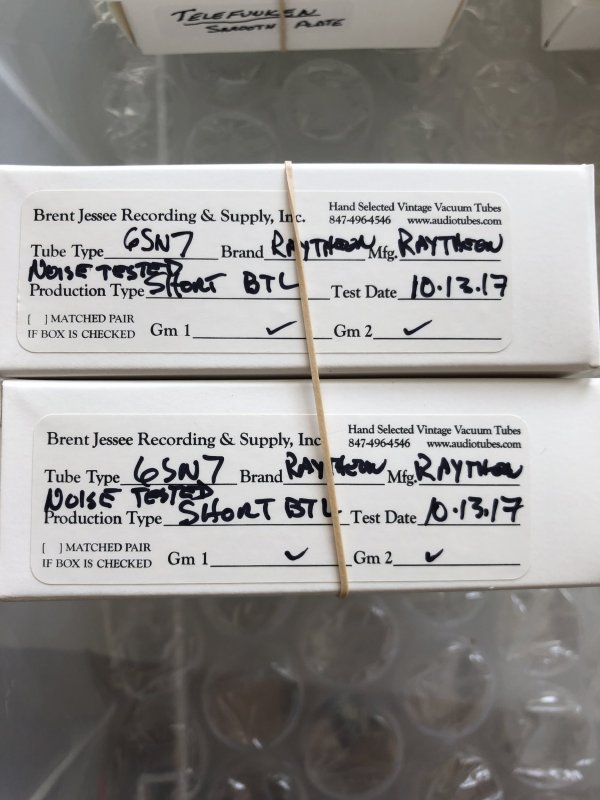 5EB750EC-1538-4F01-B8C4-AD674A276316.jpeg473.4 KB · Views: 6
5EB750EC-1538-4F01-B8C4-AD674A276316.jpeg473.4 KB · Views: 6 -
 79FCBF85-E9D4-4E24-B144-970DAF0B0597.jpeg525.2 KB · Views: 6
79FCBF85-E9D4-4E24-B144-970DAF0B0597.jpeg525.2 KB · Views: 6 -
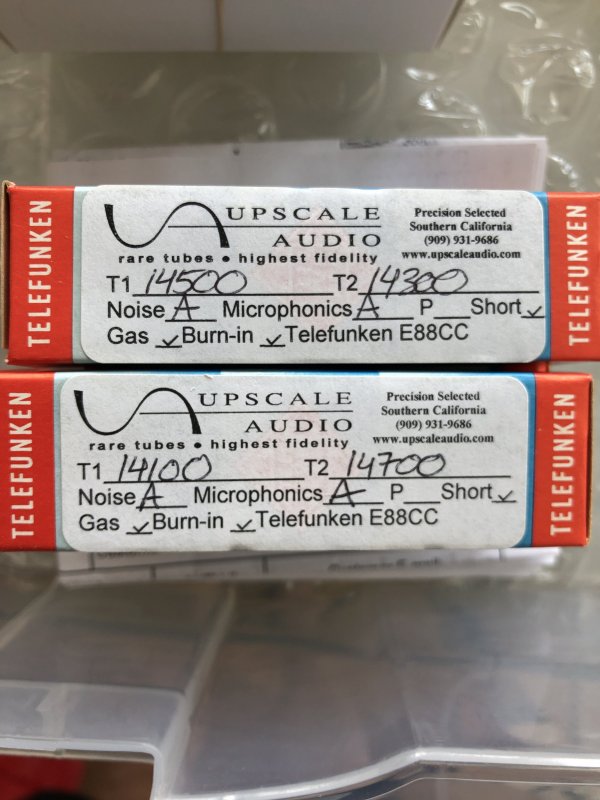 A7B2C6FF-655E-49C6-B449-F84909ED79DF.jpeg523.5 KB · Views: 5
A7B2C6FF-655E-49C6-B449-F84909ED79DF.jpeg523.5 KB · Views: 5 -
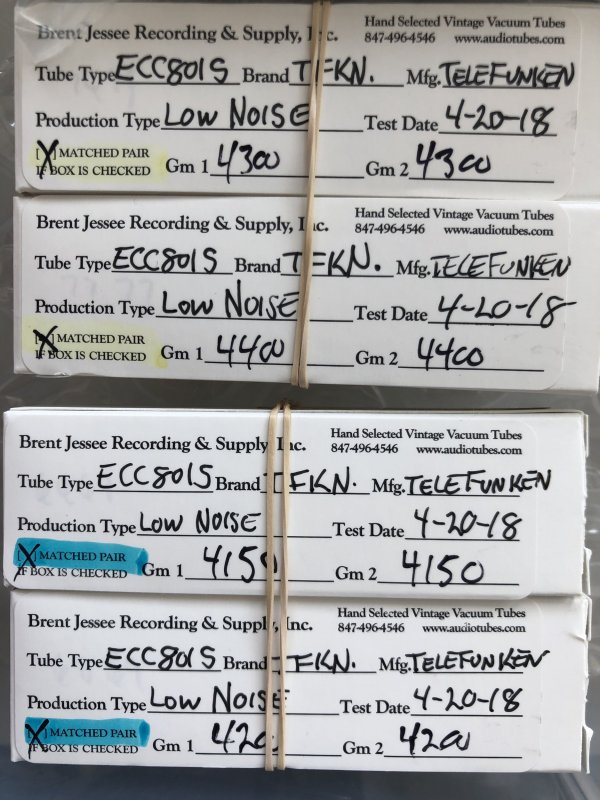 2A150A0A-6427-449F-830B-42DA2EF6A052.jpeg653.1 KB · Views: 5
2A150A0A-6427-449F-830B-42DA2EF6A052.jpeg653.1 KB · Views: 5 -
 FA9A805D-6122-4E66-AB3E-7083753C3718.jpeg450.2 KB · Views: 4
FA9A805D-6122-4E66-AB3E-7083753C3718.jpeg450.2 KB · Views: 4 -
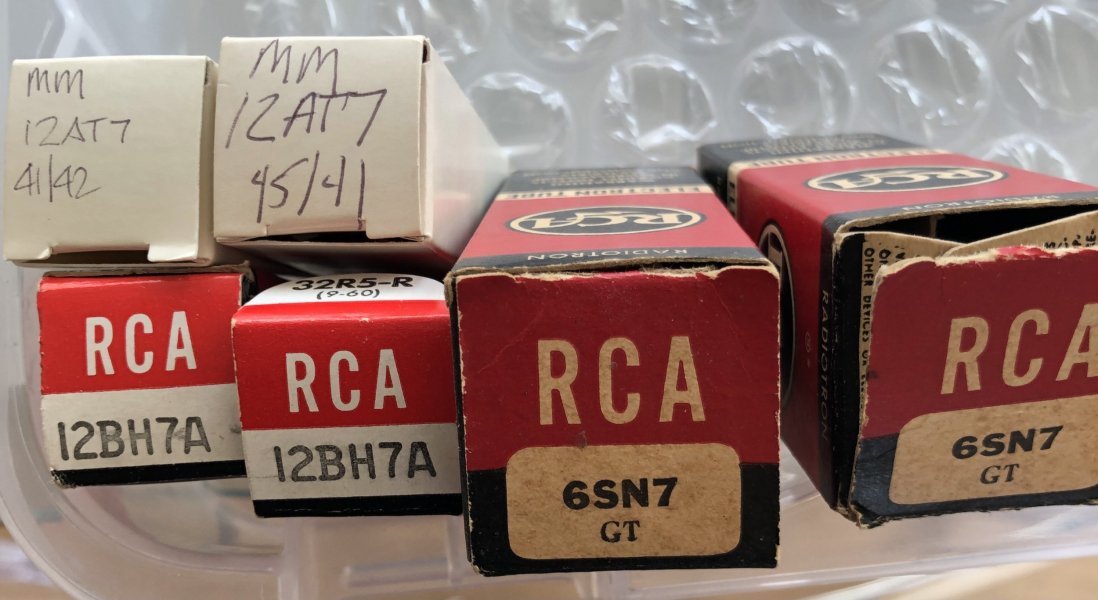 041400A0-6334-4545-AE0E-695AEE66016C.jpeg387.1 KB · Views: 5
041400A0-6334-4545-AE0E-695AEE66016C.jpeg387.1 KB · Views: 5
Last edited:
Along the way I also found a titanium head-shell ordered from Japan, and a boatload of DH Labs cables.
I found a Cardas Clear Beyond power cable that I have no recollection of ordering.
I found an XLO Reference 2 power cable.
I found a box full of MIT Zcord II power cables.
I found a spare Musical Fidelity kW series remote control.
I found a pair of Wireworld Orbit III loudspeaker cables. I think these speaker cables are special because Wireworld made the Orbit III in a zero gravity environment, so I'm definitely going to keep these and use them as my speaker cables. The sound should be out of this world!
I found a Cardas Clear Beyond power cable that I have no recollection of ordering.
I found an XLO Reference 2 power cable.
I found a box full of MIT Zcord II power cables.
I found a spare Musical Fidelity kW series remote control.
I found a pair of Wireworld Orbit III loudspeaker cables. I think these speaker cables are special because Wireworld made the Orbit III in a zero gravity environment, so I'm definitely going to keep these and use them as my speaker cables. The sound should be out of this world!
Last edited:
Just for fun I ran an interconnect from the equipment room to the listening room, approximately where the far bass tower and the far amplifier will be located. I now believe I need "only" 50 foot interconnects.
At David's suggestion I am now going to use both outputs of the VTL line stage, with one pair of interconnects going to the bass towers and one pair of interconnects going to the amplifiers (as opposed to one pair of interconnects going to the bass towers and then using a jumper cable from the bass tower to the amplifier).
Flemming told me that he has perceived no sonic penalty from using the pass-through on the bass towers and avoiding using two pairs of interconnects. But the two pairs of interconnects method is definitely the more purest approach.
At David's suggestion I am now going to use both outputs of the VTL line stage, with one pair of interconnects going to the bass towers and one pair of interconnects going to the amplifiers (as opposed to one pair of interconnects going to the bass towers and then using a jumper cable from the bass tower to the amplifier).
Flemming told me that he has perceived no sonic penalty from using the pass-through on the bass towers and avoiding using two pairs of interconnects. But the two pairs of interconnects method is definitely the more purest approach.
Attachments
Last edited:
Mogami or Belden
Balanced? Can you imagine what a 50 foot balanced pair of the new Nordost Gold cables would cost?
Last edited:
Balanced? Can you imagine what a 50 foot balanced pair of the new Nordstrom gold cables would cost?
50’ is ~15.24 meters. Round up to 16 meters for a little extra play. That might cost a bit for the Nordost golds x2. I bet that Mogami sounds just fine. Belden have some nice choices as well. Looks like the VTL has dual balanced outputs. That’s a sweet preamp.
Similar threads
- Replies
- 17
- Views
- 2K
- Replies
- 1
- Views
- 220
- Replies
- 1
- Views
- 173
- Replies
- 33
- Views
- 3K
| Steve Williams Site Founder | Site Owner | Administrator | Ron Resnick Site Owner | Administrator | Julian (The Fixer) Website Build | Marketing Managersing |


